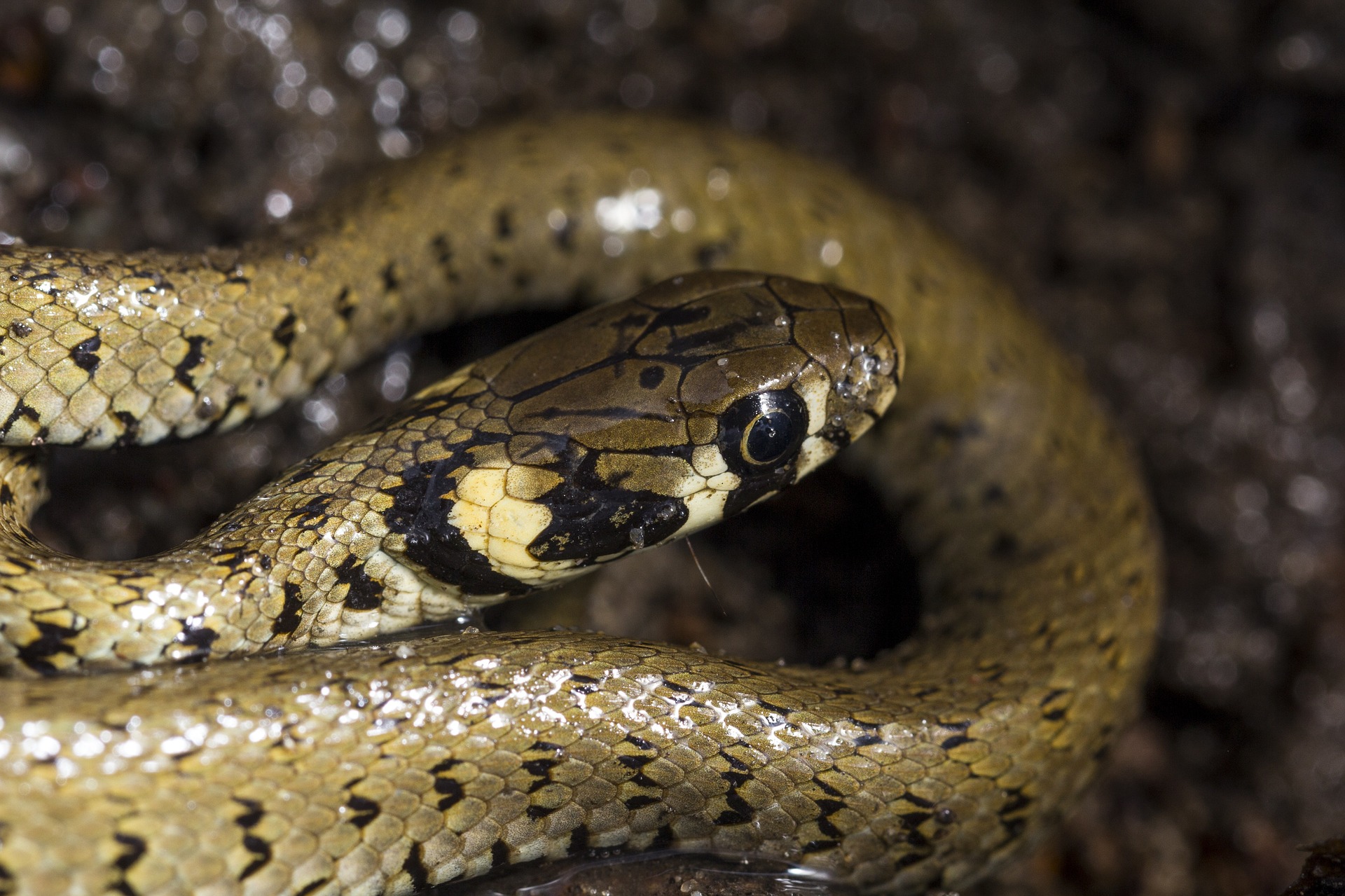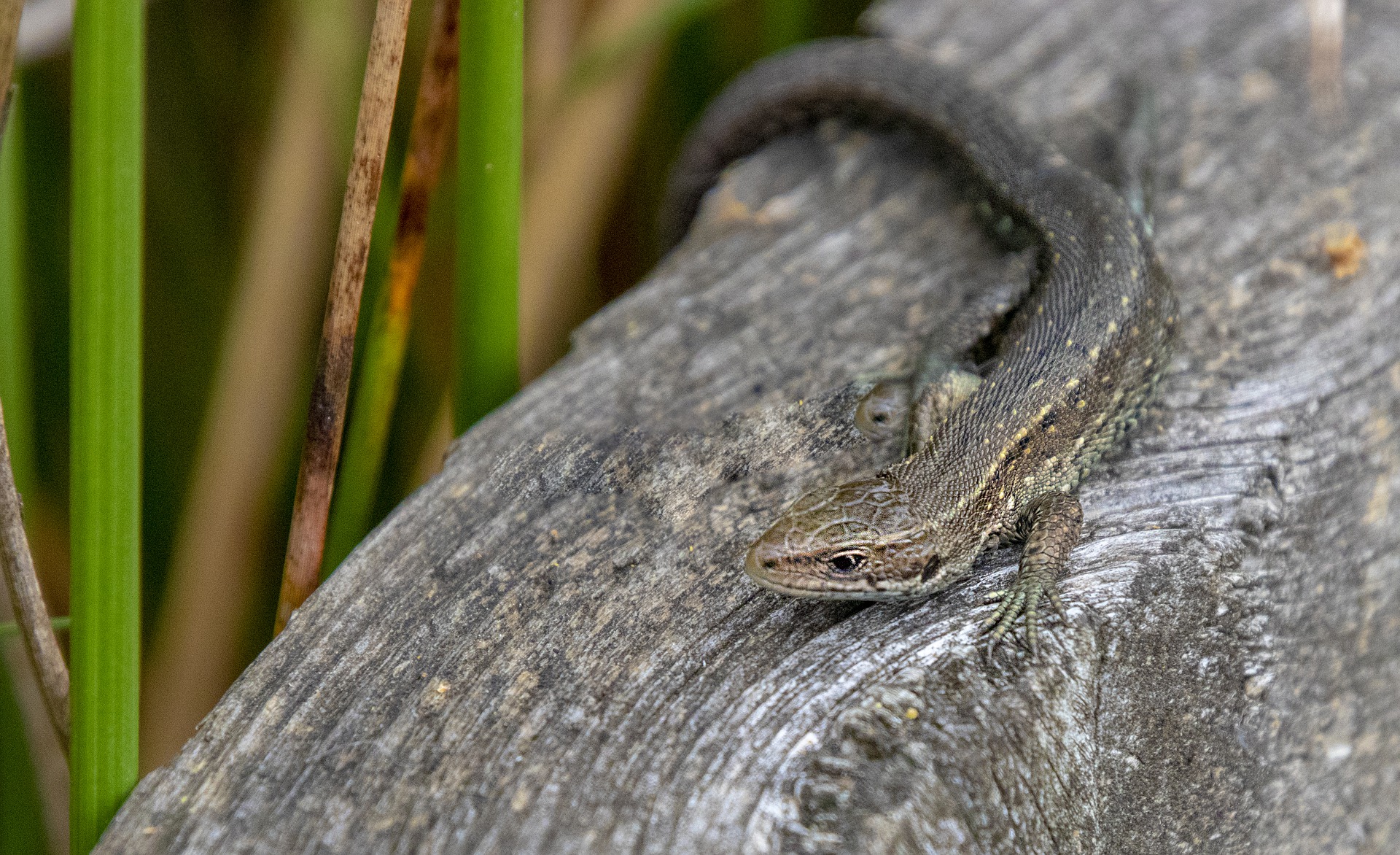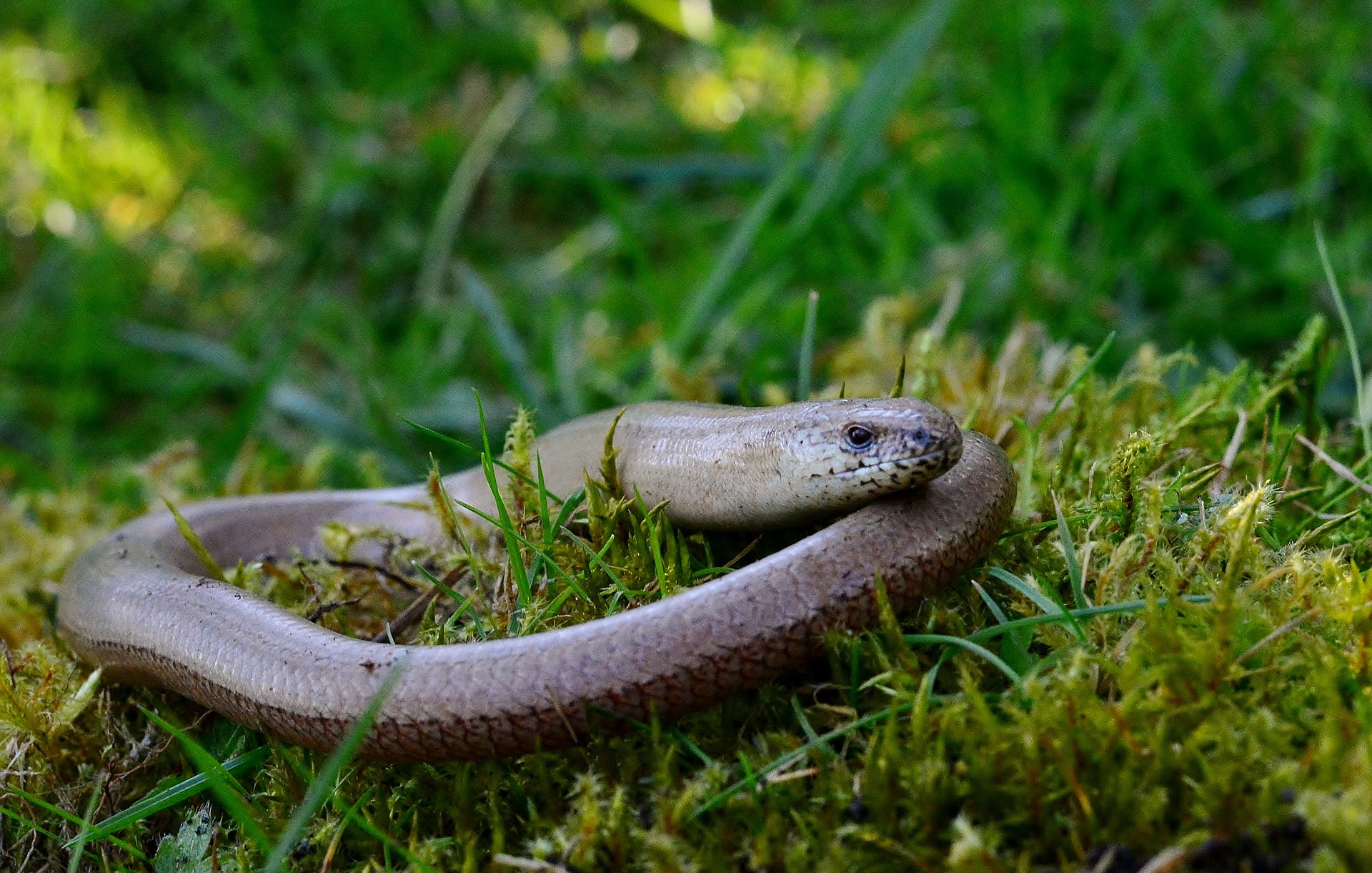Reptiles are vertebrates with impermeable skin made up of scales or bony plates, called scutes. Another characteristic of some reptiles is their ability to shed their skin, which they do as they grow. Their scales are hardened by keratin and vary greatly in size, being microscopically small or as big as the scutes which cover the shell of a turtle.
As they are cold blooded and lack features such as fur or feathers for insulation, reptiles have to get their warmth from basking in the sun or moving into the shade to cool off. As they need the sun to gain energy and lack the ability to increase their temperatures internally, they often become inactive during cooler parts of the year.
Reptile reproduction is also dependent on temperature. Most species lay their eggs on land leaving them susceptible to fluctuating temperatures. A few species stay with their eggs and keep them warm, however most reptile species leave their eggs, making them dependent on outside temperatures. Extreme temperatures are lethal for these eggs and smaller fluctuations can also affect the sex of the reptiles. This differs for different species with turtle species hatching as females at higher temperatures and males at low temperatures. However, it is the opposite in crocodile species with males born at high temperatures.
Reptiles have also adapted to use behavioural characteristics to survive in their environments. They have the ability change their body form when threatened, allowing some species of snakes to inflate the forward parts of their bodies, and many other species to open their mouths widely to warn off predators. Species can also use colour to defend themselves, using brightly coloured reds or yellows to act as a warning to other animals. However, many species can use colour to camouflage themselves, mimicking their environments and making them very difficult to spot.
Only six species of reptile are native to the UK - three snakes and three lizards. Some of these species are rare due to habitat destruction and contamination. As such, they are less likely to be seen than other species and there is lots of work to do to conserve their habitats and ensure they don’t become locally extinct.
Grass Snake
These widespread snakes are Britain’s largest reptiles, growing up to 150cm long.
Rarely seen due to their shy nature, these harmless animals bask in grassy open areas on warm summer days. Although they need open sunny spots to soak up the sun, they prefer living in damp areas near bodies of water with high quantities of vegetation to allow them to hide quickly.
Grey green in colour with black markings along its body, grass snakes commonly hunt frogs, toads and newts but can also eat fish, small mammals and birds. Interestingly, these snakes are not venomous and have to surprise their prey when hunting, often eating them alive.

The fact they are not venomous doesn’t mean grass snakes can’t defend themselves from predators. Hissing, releasing a foul-smelling secretion and playing dead are all essential mechanisms which grass snakes use to protect themselves from predation against birds of prey and larger animals.
Hibernating through winter, these reptiles emerge in April and lay up to 40 eggs in sheltered areas, usually within rotting vegetation. However, only a few of these eggs will hatch and reach adulthood, becoming prey for various predators such as herons, birds of prey, pheasants and even hedgehogs.
The best time to see this protected species is early morning when they bask in the sun, often in woodlands and gardens with ponds and plenty of vegetation.
Under Environmental Law, Grass Snakes are:
- Protected in the UK under the Wildlife and Countryside Act, 1981
- A Priority Species under the UK Post-2010 biodiversity framework
Common Lizard

As the most common reptile in the UK, this lizard is found throughout with the exception of the Scottish Isles and Channel Islands and is the only reptile native to Ireland.
Living in a variety of habitats such as heathland, grassland and woodland, common lizards bask in sunny spots close to dense cover so they can easily hide among vegetation. Warming up in the sun, these reptiles hunt small invertebrates like flies and spiders.
Varying in colour, they are often brownish grey with rows of darker spots or stripes down the back and sides. Males can be easily distinguished by their brighter colours with yellow or orange bellies, while females are plainer and paler.
An amazing characteristic of lizards is their ability to shed their tails when attacked. The tail even keeps moving after shed to distract a predator and allow the lizard to get away. However, the lizard can never regrow its tail back to its full length, which is normally over half the length of these 15cm long reptiles.
Did you know that the common lizard is also known as the viviparous lizard? Meaning they give birth to live young instead of eggs.
As lizards are cold blooded, they rely on the heat of the sun to become active. Therefore, they hibernate between October and March beneath rocks and fallen logs until temperatures rise enough for them to emerge again.
Although common lizards are a widespread species, they are under threat and declining in the UK due to habitat loss. Under Environmental Law, they are:
- Protected in the UK under the Wildlife and Countryside Act, 1981
- A Priority Species under the UK Post-2010 Biodiversity Framework
Slow Worm
Slow worms are an interesting species, often mistaken for small snakes because they look so similar. In fact, they are actually a type of legless lizard found throughout England and Scotland.
Showing the characteristics of lizards, slow worms can shed their tails when in danger and blink with their eyelids.
These reptiles like humid conditions and often hunt after dusk or after periods of rainfall to eat snails, spiders, insects and earthworms.

Up to 50cm long, slow worms can be found in heathland, grassland, woodland edges and even gardens. However, cats prey on them so it is very unlikely you will see them in your garden if you own a cat!
Hibernating underground or among trees stumps from October to March, these golden-grey reptiles are ovoviviparous. Which means they lay their eggs internally, giving birth to live young.
Like most species of reptiles in the UK, slow worms are threatened by habitat loss and are protected by Environmental Law. Under these laws, they are:
- Protected in the UK under the Wildlife and Countryside Act, 1981
- A Priority Species under the UK Post-2010 Biodiversity Framework






